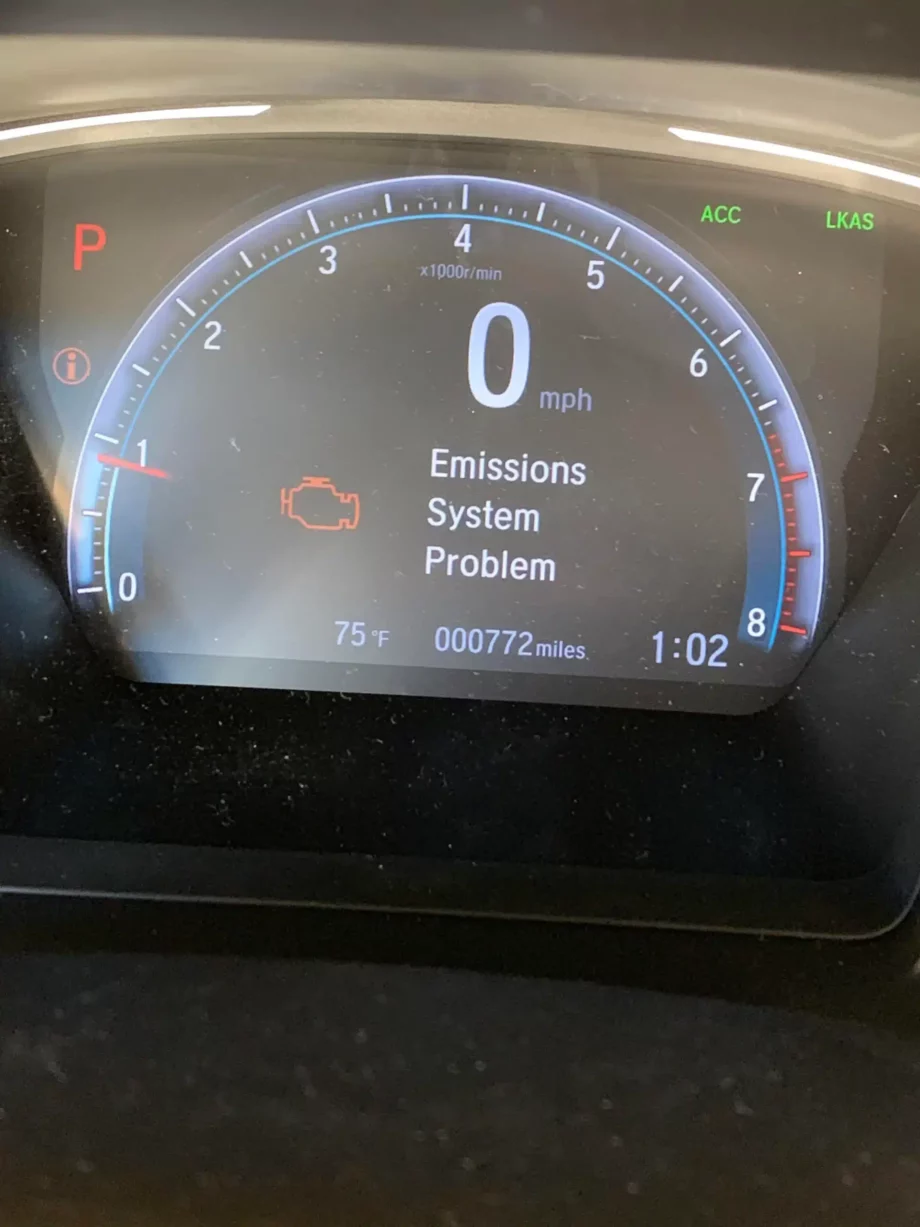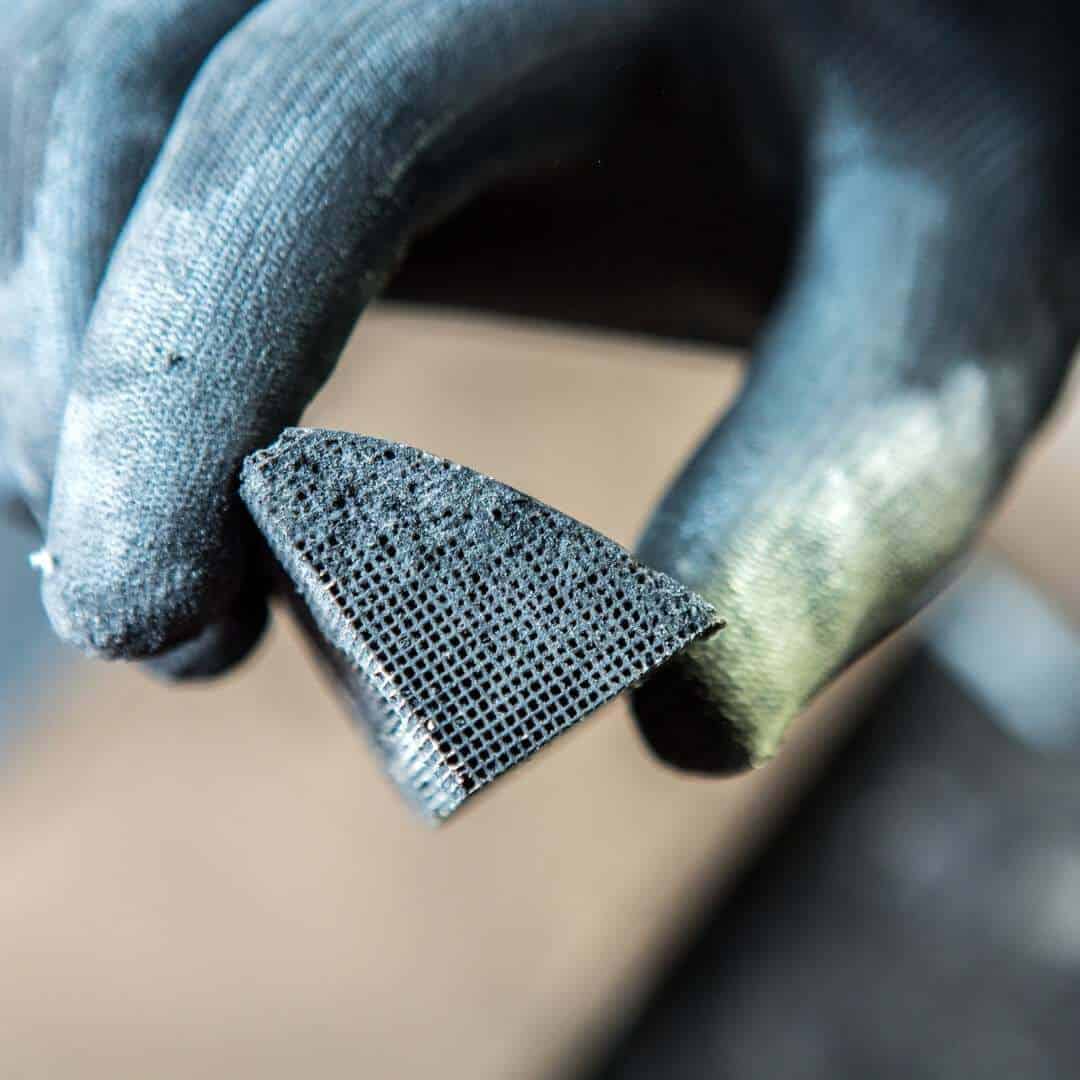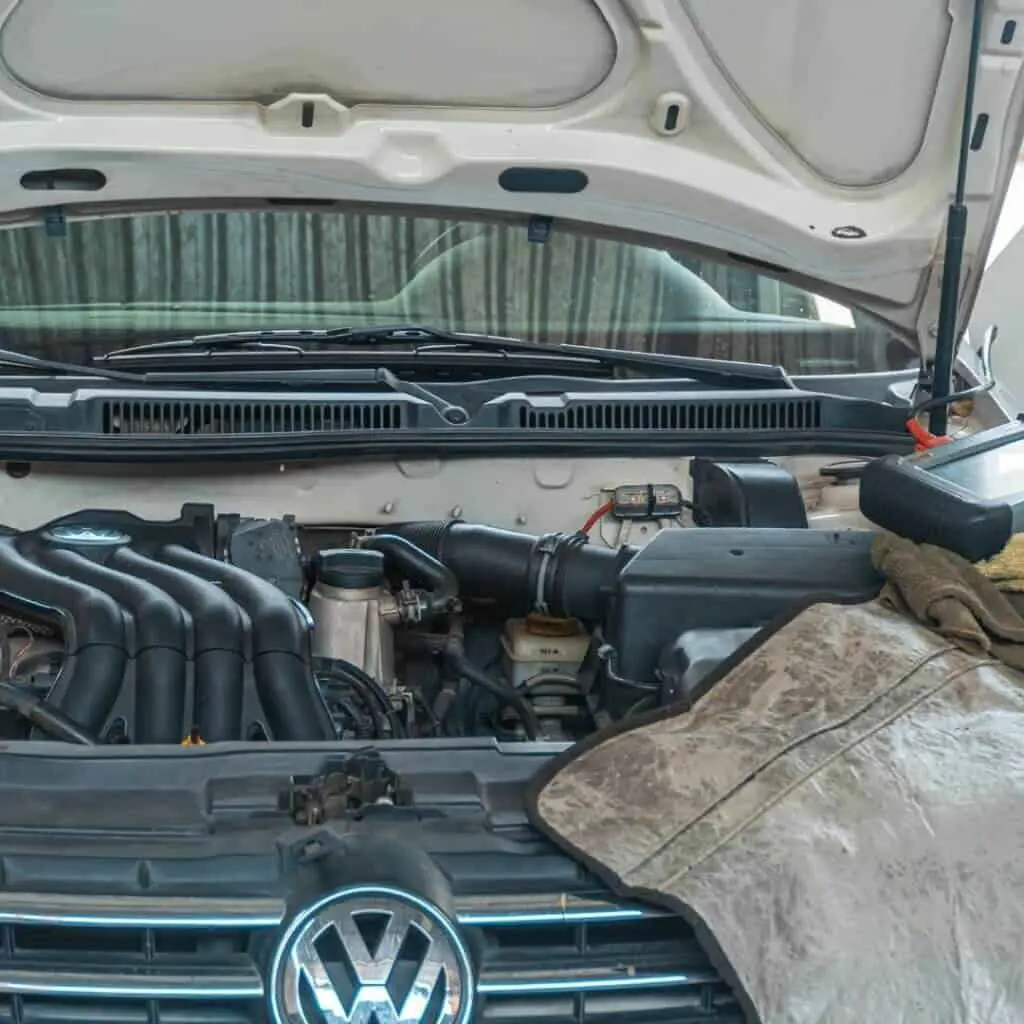Honda Civic Emission System Problem
The Honda Civic has long been regarded as a dependable and efficient compact car, winning the hearts of millions of drivers worldwide. The Civic has established itself as a market benchmark because of its remarkably low emissions, fuel economy, elegant design, and excellent performance.
However, even well-regarded and steady automobiles can have faults. Thus, like any other motor vehicle, the Honda Civic is not immune to technological issues.
The emission system issue is one of the biggest concerns for owners of this car.
What Does Honda Civic’s “Emission System Problem” Mean?

The Honda Civic’s emission system comprises several components that work together to limit dangerous pollutants discharged into the atmosphere. These components include the catalytic converter, oxygen sensors, exhaust gas recirculation valve, and onboard diagnostic system [1].
The catalytic converter transforms dangerous exhaust gases into less poisonous byproducts by using platinum and palladium as catalysts to accelerate chemical processes in the engine.
The exhaust releases these less hazardous gases into the atmosphere. When any of these components fails or malfunctions, the emission system can cause serious troubles.
When the Honda Civic displays “Emission System Problem,” it implies that the emission sensors have detected a problem with the emission system, which can be caused by various factors.
These factors include those unrelated to the catalytic converter or exhaust.
Causes of Emission System Problems

- Failure of a Catalytic Converter
The catalytic converter is vital to the emission system because it transforms dangerous gases into less damaging compounds. The converter can become blocked over time due to the deposition of carbon deposits or dirty fuel.
This results in decreased efficiency and power, reduced acceleration, and increased emissions.
A failed catalytic converter might cause the Check Engine light to illuminate, indicating a problem with your emission control system. And a malfunctioning or broken catalytic converter is frequently the result of unresolved underlying issues.
A faulty oxygen sensor, a faulty mass air flow sensor, spark plugs, or worn-out spark plug wires are the most prevalent causes of a malfunctioning catalytic converter [3].
Unfortunately, catalytic converter repair is typically one of the more expensive repairs. If you do not replace the damaged converter, your vehicle’s overall engine performance will suffer.
- Oxygen Sensor Failure
Oxygen sensors measure the amount of oxygen in exhaust gases to provide an optimal fuel-air mixture for combustion. When these sensors fail, it can result in an incorrect fuel mixture, which lowers the performance of the emission system.
The oxygen sensor can be found on the exhaust manifold. It signals to the ECU how much oxygen is present in the exhaust gas produced by your car’s engine [4].
If there is too much or too little oxygen in the exhaust, the entire system will malfunction, resulting in an emissions fault code.
Fortunately, this is an easy fix, and the oxygen sensor is inexpensive. If you need help replacing this part, take your Civic to the nearest dealer.
They should be able to sufficiently handle it.
- Problems with the Exhaust Gas Recirculation Valve
The exhaust gas recirculation (EGR) valve regulates the amount of exhaust gases that are returned into the combustion chamber to minimize emissions. The engine’s performance and emissions can suffer if the EGR valve becomes jammed open or closed.
A defective EGR valve might also be the source of the notification to check your Honda Civics’ emission system [5]. However, this valve will work if you change your engine oil regularly.
Failure to change your engine oil regularly will result in carbon buildup, which will eventually block the valve.
Nevertheless, unlike other parts that may require specialized repair skills, problems with the EGR valve can be resolved by simply cleaning it.
- Dirty Fuel Injectors
The fuel injectors in your vehicle supply the engine with an even amount of fuel. They accomplish this by spraying a fine gas mist into the combustion chambers, where it combines with air and ignites.
If your fuel injectors are clogged or unclean, they won’t be able to mix the correct quantity of fuel with air. This can lead to various issues, including increased emissions from your Civic [6].
The fuel injectors are likely responsible if your Honda has other troubles, like misfiring, idling vibrations, and the RPM gauge shifting up or down.
- Errors in the Onboard Diagnostic System
The onboard diagnostic (OBD) system is in charge of identifying and reporting defects in the vehicle. Malfunctioning OBD systems can fail to detect emission system abnormalities, making accurate diagnosis difficult.
- Bad or Loose Gas Cap
A bad or loose gas cap can cause an emissions problem in your Honda Civic. This problem is prevalent with Honda Civics. It results in various difficulties, including poor fuel economy, rough engine idle, and increased emissions.
You should frequently examine your gas cap to see if it is still in excellent condition and closed properly. If your gas cap is damaged, replace it with one from an OEM Honda part store because they are engineered to fit correctly and are of higher quality than aftermarket ones.
Consequences of Emission System Problems
A malfunctioning emission system leads to decreased fuel efficiency, increased fuel consumption, and higher operating costs for Honda Civic owners.
Furthermore, higher levels of pollutants are released into the atmosphere, contributing to air pollution and environmental degradation.
Addressing Honda Civic Emission System Problems

The solutions to this issue will differ depending on the year model of your Honda Civic. However, basic repairs, such as a filthy air filter, a damaged air cleaner intake, or other minor repairs are common to all models.
Routine maintenance, including timely inspection of emission system components, can assist in identifying and managing any issues before they worsen [7].
Regular tune-ups and attention to manufacturer-recommended service intervals are critical for maintaining an optimal emission system.
If a specific component is discovered as the source of the problem, it may need to be replaced. The replacement cost varies based on the element and the labor charges required.
When the reason for an emission system problem is not apparent, diagnostic testing may be required to pinpoint the problem.
Once the source of the issue has been identified, necessary repairs or adjustments can be performed to resolve it.
Cost Implications
The cost of rectifying emission system problems in the Honda Civic can vary significantly based on the severity of the problem and the specific component that requires repair. Minor maintenance, such as sensor replacement or cleaning can cost hundreds of dollars.
However, more substantial repairs, like catalytic converter replacement might cost between $1,000 and $2,500 or more, including parts and labour. Speak with a reputable mechanic or an authorized Honda service center for accurate and precise pricing estimates.
Can you drive if your emissions system is faulty?
Yes, you can. However, we would not advocate doing this because the emissions problem might be caused by various factors that have nothing to do with the engine.
There are some direct causes, such as malfunctioning injectors. Driving with faulty injectors for an extended period can damage the engine.
Read Also: Drive Carefully System Initializing Honda Civic
Conclusion
The Honda Civic is known for its reliability and efficiency but is not immune to emission system problems. The condition is severe, affecting both overall performance and the environment. Owners need to understand the origin and effects of this issue.
A troublesome emission system results in poorer fuel efficiency and higher emissions, contributing to higher operational costs and environmental deterioration.
Regular maintenance, inspections, prompt repairs, and adherence to manufacturer specifications are necessary to effectively address the problem.
Honda Civic owners who diligently correct emission system issues can enjoy a vehicle that delivers outstanding performance while minimizing its environmental effect.
Read Next: Vauxhall Meriva Problems




